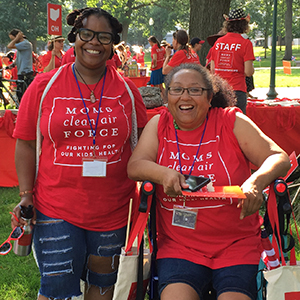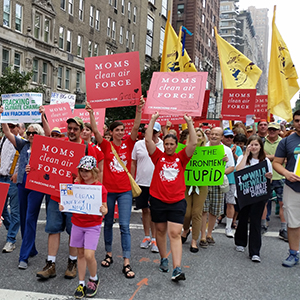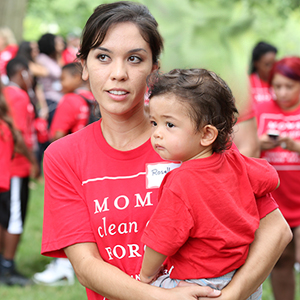
Have a question for Mom Detective? Submit it here.
JANNA IN WASHINGTON ASKS:
I gave in to my kid’s begging, and our family is officially adopting a kitten. As I prepare, I’m curious—what are the most sustainable pet care options from food to toys to litter?
Tell Congress: Support the Break Free From Plastic Pollution Act
MOM DETECTIVE ANSWERS:
How thrilling! Having a family pet is the best. We currently have three cats and have fostered several litters, including a nursing mama. I grew up with cats, dogs, and even a few parrots. There are sustainable pet care options available for felines and canines—and a lot of overlap—so in answering your fun question, I’ll share some dog information too, should it be useful for other families.
Food and treats
A UCLA study found dogs and cats are responsible for 25% to 30% of the environmental impact of meat consumption in the U.S. and that American pets consume more meat than humans in most countries worldwide. To be sustainable, some people feed their natural carnivores a vegan or vegetarian diet. I don’t. Still, there are somewhat better foods—for planetary and pet health. These are similar to “sustainable” human options: make your food from responsibly sourced ingredients or buy from brands using organic or well-raised meat. As always, look for third-party certification versus marketing hype.
Pet food comes in packaging: plastic, cans, jars, cartons. The Pet Sustainability Coalition says around 300 million pounds of pet food and treat bags are generated in the U.S. every year. Over 99% of these bags aren’t recycled. No packaging option is perfect, though I try to avoid plastic, which is made from petrochemicals and harmful to the earth, humans, and pets. The abundance of cans in my recycling bin weekly bothers me, but it’s my most recyclable option for now. Pet food companies do brisk business, so something better is surely in the works.
Gear: Less is more, consider secondhand items in good shape
Pets don’t need more than love and attention plus food and water. The amount of stuff being sold as necessities aren’t necessary—kind of like baby gear. Kitties mostly enjoy playing with balled-up socks, newspaper, and toilet paper rolls. My cats have always preferred packaging (boxes, string, paper) to new toys.
For other gear, I repurpose or buy secondhand. Like, I gather pet beds are a thing for people (not me!) who don’t sleep with their animals or want them on their furniture. Instead of buying a new bed, reuse an old pillow or DIY one by stuffing a pillowcase with items you’d otherwise send to textile recycling: old t-shirts, socks with holes, moth-eaten sweaters. This way you’ll avoid potential harmful flame retardant chemicals in new plush beds too.
Local Buy Nothing groups are good for stuff like crates, provided that the items are in good shape and that you’re taking precautions for things like fleas or pet illnesses. Consider scent too; cats tend to spurn used scratching trees and more that smell like another cat. Hiss!
Just say no to plastic
Like I said, I avoid plastic. Veterinary clinics are filled with stainless steel for good reason; it can be cleaned (with a safe and sustainable product of course!) and is durable.
- Food and water bowls: Choose stainless steel or (safe) ceramics you already own. Cats are unlikely to break anything not perched on a counter’s edge. That’s just too fun to bat off. Stainless steel or ceramic are dishwasher safe and reusable, versus (wasteful) paper plates.
- Litter boxes: Opt for stainless steel for boxes as well as scoopers.
- Toys, etc.: Plastic-free options exist for everything from brushes to leashes to collars to rope chew toys. Choose these. Want cat nip that doesn’t come in a plastic jar? Grow your own. It’s simple.
- Comfy stuff: Many cozy materials, like fleece, are actually plastic. Safer-bet natural materials include wool, hemp, cotton, and organic cotton. And oddly, cats love curling up on cardboard!
Let’s talk about poop
Having a pet means scooping poop. Families with outdoor cats may scoop less, but I keep my cats inside, away from deadly coyotes and fast cars as well as birds and critters they’re eager to catch. Guess what? There’s an organization devoted to this critical topic, Enviro Pet Waste Network. One of their tips is to arrange a pet scooper collection that repurposes pet waste. Until you asked your question, Janna, I had no idea this existed.
Cat litter: The range of “sustainable” litter materials these days boggles the mind: grass, corn, pine pellets, paper pellets, wood, wheat, tofu…! Trial some to see what your kitty prefers.
I always avoid litter with synthetic fragrances; these contain secret chemicals linked to cancer and hormone disruption, among other health harms. I also don’t use anything that “clumps” chemically in clay when peed on. If your cat eats litter (some do), these can cause intestinal obstruction. Most clumping clay litters contain crystalline silica dust, a known carcinogen for household pets and humans when inhaled. When you pour clean litter into boxes, a cloud of dust plumes up.
I’m wary of products that overpromise, like litters that change colors supposedly based on urine health. If a litter doesn’t list ingredients or otherwise disclose what chemical it contains to be able to perform such an amazing feat, I won’t purchase it. I don’t want to harm my cats. Plus, they track their litter all over my house. I find paw prints of dust on my kitchen counters! Gross.
Scooping: Flushing cat poop is easy, though its pathogenic content could harm wildlife, and pee-soaked litter can clog toilets. So, cat people scoop waste into plastic bags, then toss these into larger household garbage bags. I haven’t found a comprehensive sustainability analysis of flushing versus landfilling cat waste, but we can at least minimize plastic when changing litter boxes. First, don’t use plastic litter box liners. Just clean the boxes. Second, scoop directly into your garbage, not into a baggie first.
Dog waste: Dog poo options include composting at home or flushing (if allowed), but if you’re walking your pooch in public, you’re going to need a baggie. Rules are rules. You can use paper bags or empty bread bags and the like that you already have. There are also biodegradable dog poop bags for sale, but those only break down in industrial composting facilities. Mostly, they just wind up in regular old landfills where they don’t biodegrade.
My final thoughts are not about sustainability: Please microchip your new baby, pet insurance is useful (trust me), and enjoy! What’s sweeter than a new kitten?
Learn more about Moms’ work on chemical safety.
Tell Congress: Support the Break Free From Plastic Pollution Act




